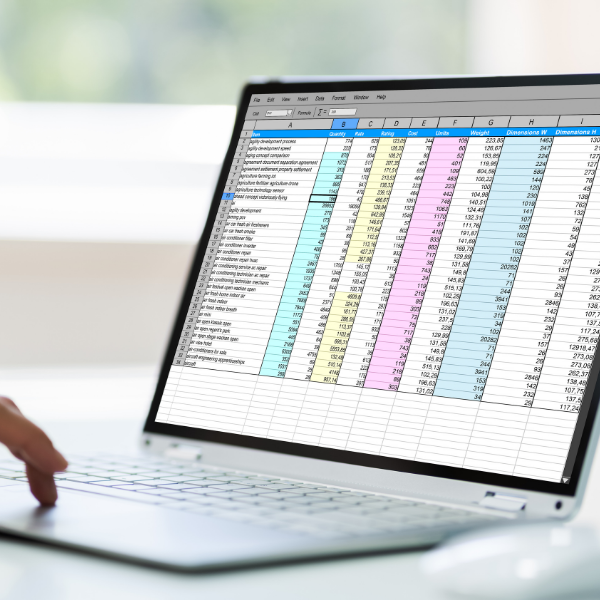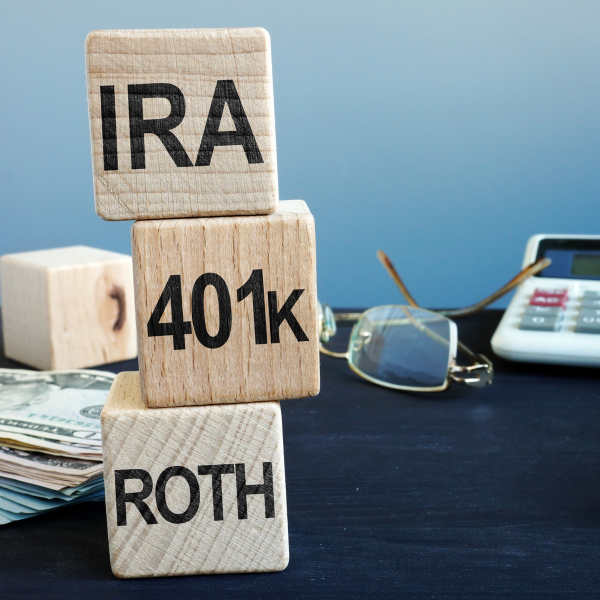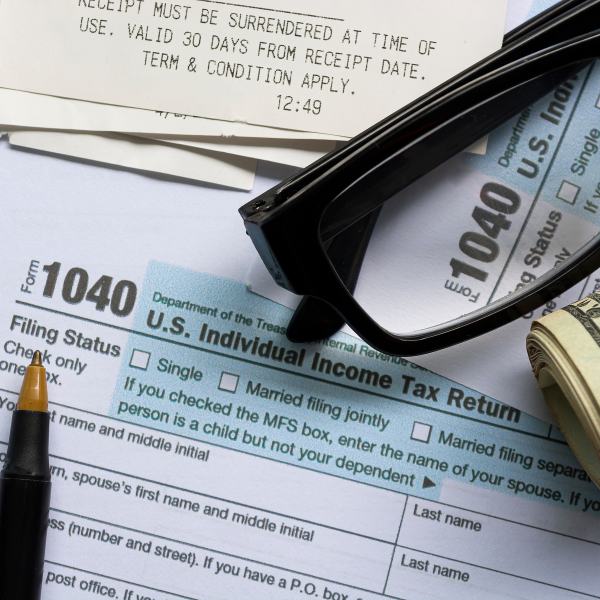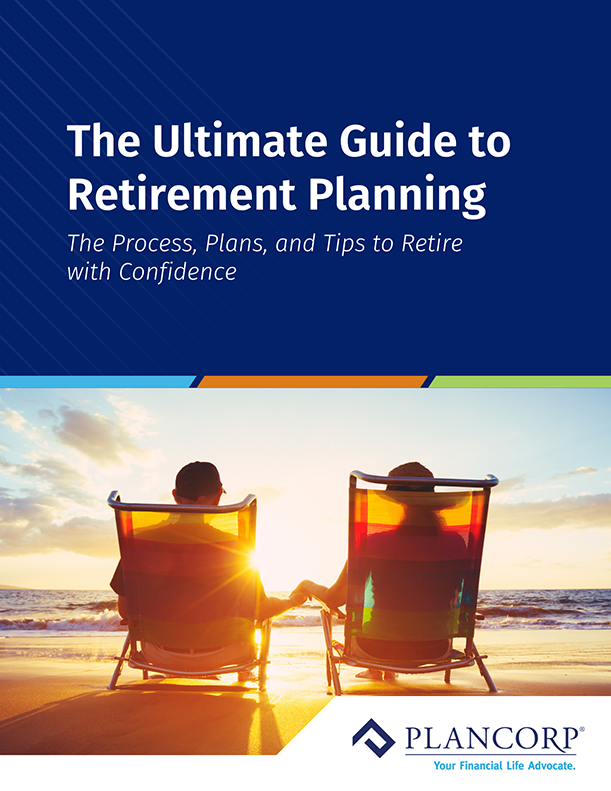The Ultimate Guide to Retirement Planning
The Process, Plans, and Tips to Retire with Confidence
Table of Contents
At its core, retirement planning involves setting clear financial goals, estimating the income you’ll need once you stop working, and mapping the most effective path to get there.
This dynamic process includes budgeting, investing, accounting for taxes and healthcare, and even preparing for legacy and life transitions.
It’s about more than reaching a number: it’s about creating a plan that supports your evolving priorities across every life stage.
In this guide, we’ll cover:
- A clear definition of retirement planning and how it works
- Why it’s essential to begin sooner rather than later
- The broader benefits—both financial and emotional—of planning ahead
Let’s start by defining what retirement planning actually means.

What is Retirement Planning?
Simply put, retirement planning is the process of answering this question: “How do I make sure my future self can live the life I want without worrying about money?”
Good retirement planning goes beyond numbers on a spreadsheet. It’s about creating a vision: where you’ll live, how you’ll spend your days, and the experiences you want to have, and then making a plan that turns that vision into reality.
It’s also flexible, because life happens, and your priorities (or the economy) can change along the way.
Think of it as a roadmap:
- Set your destination. Decide when you want to retire and what your ideal lifestyle looks like.
- Map the route. Choose the savings tools, investments, and strategies to get you there.
- Check the GPS. Review your plan regularly and adjust for detours like market changes, career moves, or life events.
The earlier you start, the more freedom and options you’ll have—but it’s never too late to begin.
The Process of Retirement Planning
Once you understand what retirement planning is, the next question is: “Okay… so how do I actually do it?”
The process can feel overwhelming at first, but it’s really just a series of steps you revisit over time as life changes. Think of it as an ongoing cycle rather than a one-and-done checklist.
Here’s how it usually comes together:

1. Picture Your Retirement
Start with the fun part: imagining what your ideal retirement looks like. Are you traveling? Moving closer to family? Starting a passion project or part-time gig? The clearer your vision, the easier it is to plan for it.

2. Take Stock of Where You Are Now
Look at your current savings, investments, debts, and other assets. This is your starting point, and it helps you see how far you have to go to reach your retirement goals.

3. Estimate Your Retirement Expenses
Factor in everyday living costs, travel, hobbies, healthcare, and even “big ticket” items like buying a vacation home or helping kids/grandkids. This number becomes your target.

4. Identify Your Income Sources
Retirement income can come from many places: 401(k)s, IRAs, brokerage accounts, pensions, Social Security, rental income, or business proceeds. Knowing your mix helps you see whether you have gaps to fill.

5. Choose Your Savings and Investment Strategy
This is where tools like tax-advantaged accounts, diversified portfolios, and long-term growth strategies come in. The right mix depends on your risk tolerance, time horizon, and goals.

6. Plan for Taxes and Healthcare
Taxes don’t stop when you retire, and healthcare costs often go up. Building these into your plan early can help prevent surprises later.

7. Review and Adjust Regularly
Retirement planning is a living process. Check in annually, or after major life changes, to make sure your plan still fits your vision, and tweak it as needed.
Why is Retirement Planning Important?
It’s easy to think of retirement as something far off in the future, but the truth is: the decisions you make today directly shape the options you’ll have later. That’s why retirement planning matters so much.
Here are a few reasons it deserves your attention:
- Financial Security: Nobody wants to spend their retirement years worrying about whether the money will run out. A solid plan puts an end to guesswork and gives you confidence that your savings, investments, and income sources can cover your desired lifestyle.
- Freedom of Choice: Planning ahead gives you options. Do you want to retire early? Travel the world? Start a second career or passion project? Without a plan, your choices are limited to whatever your bank account allows.
- Healthcare Preparedness: Medical costs are one of the biggest unknowns in retirement. Factoring them into your plan early helps you avoid surprises and ensures you can afford the care you need.
- Tax Savings: Strategic retirement planning can minimize the taxes you’ll owe—both now and in retirement—by taking advantage of accounts like 401(k)s, IRAs, and Roth options. That means more of your money stays working for you.
- Peace of Mind: At its core, retirement planning reduces stress. Instead of wondering, “Will I have enough?” you’ll know where you stand and what steps to take next.
In short: retirement planning is important because it turns uncertainty into clarity. The earlier you start, the more time you give your money to grow—and the more freedom you’ll have when it’s finally time to enjoy the life you’ve worked so hard for.
Types of Retirement Plans
When it comes to retirement planning, the options can feel like alphabet soup: 401(k), IRA, SEP, Roth—it’s easy to get overwhelmed.
Let’s highlight the most common types you’ll likely encounter, what makes each one unique, and when one might make sense for you.
Employer-Sponsored Plans
1. 401(k) / Roth 401(k)
These are the most popular plans for folks with traditional jobs. With a traditional 401(k), you contribute pre-tax dollars which lowers your taxable income now. Your savings then grow tax-deferred until retirement.
A Roth 401(k) flips that: you pay taxes upfront, so you can withdraw tax-free later.
2. 403(b) & 457(b)
Offered to nonprofit and government employees, these types of plans are similar to 401(k)s in that you contribute pre-tax, but they have some unique rules:
- 403(b)s sometimes offer extra catch-up for long-service employees.
- 457(b)s let you withdraw without penalty if you leave your job—even before age 59½
Self-Employed & Small Business Options
3. SEP IRA
A great option for self-employed individuals or small businesses, employers can contribute up to 25% of compensation (limit: ~$70,000 in 2025). The contributions are flexible, meaning you can contribute more one year, and skip the next.
4. SIMPLE IRA
Designed for small businesses (100 employees or fewer), employers either match up to 3% or contribute 2% automatically. Employee contribution limits are lower than a 401(k), but it’s simple and affordable.
5. Solo 401(k)
A solo 401(k) is ideal if you’re self-employed with no employees. You act as both employer and employee, allowing higher contributions. This plan offers great flexibility, especially for maximizing retirement savings.
Individual Accounts (Open to Anyone)
6. Traditional IRA
Anyone with earned income can open a Traditional IRA. Contributions may reduce your taxable income now, and investment earnings grow tax-deferred until withdrawal. Limits are lower—around $7,000 in 2025.
7. Roth IRA
Roth IRAs are similar to their traditional counterpart, but you contribute after-tax dollars, and withdrawals in retirement are tax-free. This type of account is best if you expect to be in a higher tax bracket later.
8. Rollover IRA
If you leave a job where you had a 401(k), you can roll it into an IRA. It gives you more investment options and keeps your tax-advantaged savings growing in one place.
Which Retirement Plan is Best?
There’s no one-size-fits-all when it comes to retirement accounts. The right plan depends on your job situation, income level, and whether you’re saving on your own or through an employer. Some plans offer higher contribution limits, others give you tax breaks now or later, and some are designed specifically for self-employed individuals or small businesses.
To make the differences easier to see, here’s a side-by-side look at five of the most common retirement plans:
|
Feature |
401(k) |
Traditional IRA |
Roth IRA |
SEP IRA |
Simple IRA |
|
Employer contributions |
✅ (Often) |
❌ |
❌ |
✅ (Employer only) |
✅ (Employer required) |
|
High contribution limits |
✅ |
❌ |
❌ |
✅ |
🟡 (Lower than 401k, higher than traditional Roth) |
|
Tax-advantaged growth |
✅ |
✅ |
✅(Tax-free withdrawals) |
✅ |
✅ |
|
Income restrictions |
❌ |
✅ (For tax deduction) |
✅(Eligibility phases out) |
❌ |
❌ |
|
Available to self-employed |
❌ |
✅ |
✅ |
✅ |
✅ |
|
Ease of setup |
✅ (Through employer) |
✅ |
✅ |
✅ |
✅ |
Things to Consider When Creating a Retirement Plan
Building a retirement plan isn’t just about numbers on a page. It’s about weaving your real life into the strategy. Your goals, family situation, and future expenses all play a role in shaping how much you’ll need and how you’ll get there.
Here are some of the biggest factors to keep in mind:
Kids & College
If you have or plan on having children, think about how much financial support you want to provide as they transition to adulthood. Do you plan on helping with college tuition, contributing to weddings, or even chipping in on the down payment for their first home? These decisions can impact how much you save for retirement versus other priorities.
Your Spouse or Partner
Retirement planning is rarely a solo project. You’ll want to consider your partner’s income, benefits, savings, and retirement age. Coordinating your plans can help you maximize Social Security benefits, healthcare coverage, and investment strategies.
Big Purchases
Retirement is often when people finally have the time to make big lifestyle moves, like buying a vacation home, upgrading vehicles, or traveling more.
These larger expenses should be factored into your savings targets so they don’t throw your plan off track.
Debt
Carrying debt into retirement can be a strain on your budget. Paying down high-interest debt before you stop working frees up more income for the things you actually want to enjoy.
Taxes
Taxes don’t stop when you retire—they just look different. Withdrawals from certain accounts are taxable, and required minimum distributions (RMDs) kick in later in life.
Building tax-smart strategies now can help keep more of your money working for you.
Healthcare & Insurance
Healthcare is often one of the biggest expenses in retirement, and it can be unpredictable. Factor in premiums, out-of-pocket costs, and long-term care coverage. Life insurance, disability insurance, or long-term care insurance might also play a role depending on your needs.
Inflation & Resiliency
Although saving for retirement is a process that takes decades, don't forget that you're building a solid enough nest egg to last you another multiple decades. Consider the many changes that will happen within the market, to costs of daily necessities, to healthcare and more. It's important to ensure you've built a plan that can weather reasonable changes without requiring you to get a job (if you don't want one) or that would limit you from doing the things you hope to during retirement.
Retirement Planning Tips by Age
Everyone’s path to retirement looks a little different depending on where you are in life. Here’s a quick cheat sheet for what to focus on for each stage:
In Your 20s and 30s
Start small but smart. Build an emergency fund, lock in employer retirement contributions (especially any match), begin investing—even if it’s just a little—and get basic protections like disability and life insurance in place. These early moves give your future self a head start.
In Your 40s
This is often your highest-earning decade, so it’s time to maximize retirement contributions, pay down high-interest debt, possibly open a taxable investment account for flexibility, and revisit estate docs or insurance coverage.
In Your 50s
The realities of retirement are closer than ever. In this decade, you’ll fine-tune your savings, lean into catch-up contributions, and make sure your plan includes contingencies—like healthcare, income streams, and buffer for unexpected costs.
In Your 60s
Your long-term savings should be solid by now, so shift to preparing for the actual retirement transition. Pay off any lingering debt, finalize Social Security timing, ensure your cash flow will support lifestyle choices, and get emotionally ready to leave full-time work.
Why This Matters
Each decade comes with its own financial hurdles and opportunities. The more tailored your approach, the better your chances of retiring on your terms—whether that’s early, comfortably, or with flexibility.
How to Transition to Retirement
Once you’ve reached retirement, it’s time to turn your savings into a sustainable income stream while managing risks like market volatility, taxes, and longevity. Here’s how to make the transition smoother:
1. Develop a Drawdown Strategy
Your withdrawal plan is the backbone of retirement income. Without a clear strategy, you risk overspending early or being too conservative and missing out on experiences you’ve worked hard for.
Popular approaches include:
- The 4% Rule: Start by withdrawing 4% of your portfolio in the first year, then adjust for inflation annually. It’s a simple guideline, but it assumes steady market conditions, so flexibility is key.
- Bucket Strategy: Divide your assets into “buckets” based on time horizon: cash for near-term needs, bonds for mid-term stability, and stocks for long-term growth. This helps you avoid selling equities during downturns.
- Dynamic Withdrawals: Adjust spending based on portfolio performance. For example, tighten withdrawals in down markets and loosen them when returns are strong. This approach can extend portfolio life significantly.
Pro Tip: Running projections using different market scenarios is a great way to stress-test your plan. Our team at Plancorp can help model these outcomes and suggest adjustments.
2. Understand Tax Implications
Taxes don’t disappear in retirement—they just change shape. Strategic planning can save thousands over time.
- Withdrawal Order Matters: A common approach is to draw from taxable accounts first, then tax-deferred accounts (401(k), IRA), and finally Roth accounts. This sequence can minimize lifetime taxes.
- Watch for Tax Bracket Creep: Large withdrawals can push you into higher brackets or increase Medicare premiums. Spreading out income sources can help smooth tax liability.
- Roth Conversions: Converting traditional IRA funds to Roth during low-income years (often early retirement) can reduce future RMDs and create tax-free income later.
Pro Tip: Coordinate withdrawals with Social Security timing and capital gains harvesting to optimize your tax picture.
3. Plan for Required Minimum Distributions (RMDs)
Starting at age 73 (as of 2025), you must take RMDs from most tax-deferred accounts. Missing an RMD can result in penalties up to 25% of the amount not withdrawn.
- Calculate Early: Use IRS life expectancy tables to estimate future RMDs and plan cash flow accordingly.
- Integrate with Income Plan: RMDs can push you into higher tax brackets, so consider offsetting with charitable giving or Roth conversions before they start.
- Qualified Charitable Distributions (QCDs): If you’re charitably inclined, QCDs allow you to donate directly from your IRA to a qualified charity, satisfying your RMD without increasing taxable income.
Pro Tip: Start planning for RMDs in your early 60s to avoid surprises later.
4. Secure a Cash Flow Buffer
Market downturns are inevitable and selling investments at a loss can derail your plan. Keeping 12–24 months of expenses in cash or short-term bonds provides a cushion.
- Why It Matters: This buffer lets you ride out volatility without tapping long-term investments.
- How to Build It: Gradually shift a portion of your portfolio into liquid assets as you approach retirement.
Pro Tip: Pair your cash buffer with a line of credit (like a HELOC) for extra flexibility during prolonged downturns.
5. Revisit Your Investment Mix
Your portfolio should evolve as you transition into retirement. While reducing risk is important, going too conservative can expose you to inflation risk.
- Balanced Approach: Many retirees maintain 40–60% in equities for growth, with the rest in bonds and cash for stability.
- Regular Reviews: Rebalance annually or after major market moves to keep your allocation aligned with your goals.
Pro Tip: Consider adding inflation-protected securities (TIPS) or dividend-paying stocks for income and purchasing power protection.
Emotionally Preparing for Retirement
Let's be honest, the conversation around retirement planning tends to focus all on numbers and not the person.
We find, especially with those who have had successful careers, that the emotional transition into retirement years is one of the key hurdles to overcome.
The Success Trap
This can happen to anyone, but especially for physicians, attorneys, business owners or executives, it's only reasonable to put a lot into your career and in return get a lot of personal self-worth from your professional accomplishments. Your career is likely more than "just a job" and it's important to not take that for granted once you're approaching retirement.
Retirement can go from the achievement of your career to a looming threat to your routine, your social network, and generally a sense of accomplishment. It's important to openly discuss these thoughts with your family, close friends, and even colleagues to ensure you're unpacking more than just your financial independence analysis.
If any of that resonates with you, a book worth reading is Master of Change, by Brad Staulberg. One of the many concepts in the book (which is generally focused on being a 'ruggedly flexible' individual personally and professionally) is about building out rooms in your identity house. Sound a little woo woo? We promise it's worth digging in on.
In short, if you think about your identity as a house, you want multiple rooms to be in good shape serving their function. Focus all of your energy on one room and neglect others, and you become off-balanced, meaning a change could knock you off course. Or in this case, put too much focus on your 'career room' at the expense of family, hobbies, friends, or interests and you could be in for a difficult retirement.
Choices and Second Acts
Rather than seeing your retirement as a final destination, re-connect with the reality that successfully saving for retirement is simply buying you the flexibility to choose paths that interest you. That doesn't have to look like the traditional definition of retirement.
You can find an entirely fulfilling and less stressful second act by choosing to spend time volunteering or leading organizations you're passionate about. Or perhaps you'd like to become more of a professional consultant or mentor. Let your decades of hard work and experience become what fuels a rising generation of leaders in your space.
They key is to not wait until after retirement to start digging in on this.
Vision & Accountability
We find that one of the most under-valued aspects of a good financial advisor relationship is the sounding board to help you unpack and then unlock your vision for life when you're financially independent. You'd be surprised how many people never fulfill their retirement plans out of fear or ignorance.
Does your ideal retirement look like planning an annual trip? Share that with your advisor, who can plug that into a cash-flow plan and then act as an accountability partner to make sure you're following through along the way. The most important thing is that you're living the life you worked hard for, whatever that may look like for you and your family.
Clearly we're very passionate about this aspect of retirement planning. It's the missing link so many go without, meaning they risk not living up to their full potential. Ready to talk with an advisor that goes beyond the numbers? We're proud to say we deeply connect with clients in a way that we can serve as your partner in aligning your wealth with your goals and values. If you're curious about what you could focus on with financial constraints off your plate, let's chat!
How an Advisor Can Help with Retirement Planning
Emotional transition aside, the core finances of retirement planning is also complex. The closer you get to retirement, the more moving parts there are.
From tax strategies and investment allocation to healthcare planning and legacy goals, the stakes are high. That’s where a trusted advisor can make all the difference. Here’s how our team at Plancorp can help ease the burden:
1. Personalized, Holistic Planning
Our wealth managers at Plancorp look beyond account balances to understand your entire financial picture: your income sources, lifestyle goals, family priorities, and risk tolerance.
We build a living plan for our clients that adapts as your life changes, ensuring your strategy stays aligned with your values and objectives.
2. Expertise in Complex Strategies
Navigating drawdown strategies, tax-efficient withdrawals, and required minimum distributions (RMDs) can be overwhelming. Our advisors can help you:
- Optimize the order of withdrawals to minimize taxes.
- Plan Roth conversions during low-income years.
- Coordinate Social Security timing with portfolio income.
This proactive approach can save thousands over your retirement horizon.
3. Investment Management with Discipline
Emotions can derail even the best-laid plans. Plancorp's team adheres to an evidence-based investment strategy, rebalancing your portfolio and adjusting risk as you transition from accumulation to distribution. Our Investment Committee continuously evaluates research and opportunities to keep your plan on track.
4. Coordination Across All Areas
Retirement planning touches more than investments. Advisors integrate:
- Insurance and healthcare planning to protect against unexpected costs.
- Estate and legacy planning to ensure your wealth supports future generations.
- Charitable giving strategies like Qualified Charitable Distributions (QCDs) for tax efficiency.
5. Ongoing Guidance and Accountability
Your plan isn’t static. Our advisors meet with you regularly, monitor progress, and adjust for life events or market changes.
At Plancorp, you’ll have a dedicated team working together to keep your plan current and your goals in focus.
Download the PDF Version

Access The Ultimate Guide to Retirement Planning anytime with the free PDF version.
Disclosure
For informational purposes only; should not be used as investment tax, legal or accounting advice. Plancorp LLC is an SEC-registered investment adviser. Registration does not imply a certain level of skill or training nor does it imply endorsement by the SEC. All investing involves risk, including the loss of principal. Past performance does not guarantee future results. Plancorp's marketing material should not be construed by any existing or prospective client as a guarantee that they will experience a certain level of results if they engage our services, and may include lists or rankings published by magazines and other sources which are generally based exclusively on information prepared and submitted by the recognized advisor. Plancorp is a registered trademark of Plancorp LLC, registered in the U.S. Patent and Trademark Office.
Like What You’re Reading? Get Insights to Your Inbox. Unsubscribe Anytime.
Schedule a Call With a Wealth Manager to Get Started
Let Plancorp help so you can focus on making the most of your wealth
St. Louis, MO | Nashville, TN | Sarasota, FL | San Francisco, CA
Direct: 636-532-7824 | Toll Free: 888-220-1163 | info@plancorp.com
- Legal Notices
- Privacy Policy
- ADV Part 2A
- View Cefex Certificate
- Form CRS
- Press Room
- Cyber Security Policies
- © 2025 Plancorp, LLC.
© 2025 Plancorp, LLC. All Rights Reserved.



